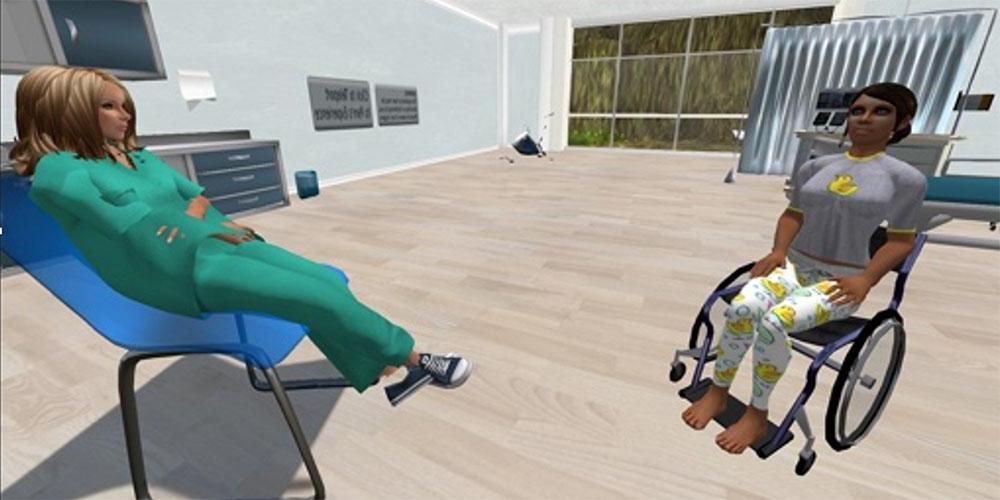Using Virtual Reality to Educate Students in the Care of Persons with Alzheimer’s Disease
Led by SUNY Upstate Medical University’s Department of Public Health and Preventive Medicine and in collaboration with the Department of Geriatrics, an Alzheimer’s patient care training program is being designed and piloted using the virtual world platform, Second Life®. The technology partner for the project is Virtual Ability®, a nonprofit cross-disability peer support community that operates in online virtual worlds. The project is funded under the State University of New York’s Innovative Instruction Technology Grants (IITG) program.
The project is an innovative approach to clinical training in Alzheimer’s disease that uses virtual world technology to provide training for medical, nursing and physician assistant students. A virtual health clinic is being created that, over time, can be expanded in complexity to support a variety of virtual training applications. Within this computer-based simulated environment, student users create unique identities in the form of avatars through which they engage in activities reflective of the real world, interact with other bots (patient/caregiver), and move freely within the 3-dimensional virtual built environment. It is up to the student to determine what he or she takes away from the experience (similar to a live classroom). For the Alzheimer’s training pilot, students will be guided by project team members and guideposts on Second Life will direct their avatars to the health clinic, exam rooms and in-home settings.

According to Alyssa Indelicato, Project Coordinator, “Students have commented on gaining extensive perspective and insight in patient and caregiver encounters. They have also expressed renewed interest in having more engagement with Alzheimer’s patients and caregivers.”
The primary project activities include curriculum development, technology development, and pilot testing and evaluation. “Importantly, the project is using an inter-professional education (IPE) approach that incorporates shared learning and collaborative team environments from other disciplines,” says Dr. Telisa Stewart. “Our faculty along with caregivers of patients with Alzheimer’s will share, learn and collaborate to create the student learning modules.”
Currently, SUNY Upstate’s health professions students’ educational experience in Alzheimer’s disease is limited to medical students who only receive a block of didactic lectures during half day symposium during their second year. According to Dr. Sharon Brangman, “Virtual training provides a practical way to integrate dementia education into the health professions curriculum to ensure that all students gain a fundamental understanding of clinical principles in the care of Alzheimer’s patients – a unique and at risk population.”

